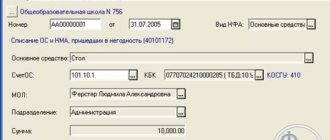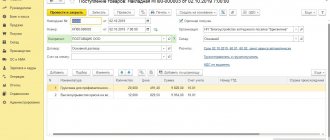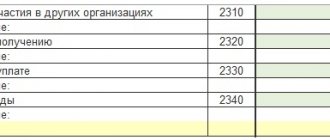How to analyze the condition and use of fixed assets
Analysis of the efficiency of use of fixed assets will determine how productively the equipment/mechanisms are used and what is the degree of supply of production with machinery and equipment.
This analysis is a component of management accounting and provides answers to the following questions:
- how the state of fixed assets affected labor productivity and what is the dynamics;
- what is the equipment load level;
- whether repairs of fixed assets are required and how economically justified additional investments will be.
To conduct financial analysis, you can use data from statistical reporting such as:
- appendix to the balance sheet (form according to OKUD 0710005, pp. 4, 6);
- report on form 11;
- form 1-nature-BM;
- balance;
- inventory cards for fixed assets (FPE).
The purpose of analyzing OS performance indicators
The derived economic indicators, reflecting the effectiveness of the use of property assets, help to assess how the profit received as a result of the organization’s activities relates to the funds (meaning fixed assets) that were spent on it.
The following investigations and calculations will help clarify:
- the degree of rationality in the use of existing fixed assets;
- possible disadvantages and problems associated with using the OS;
- potential for growth in the efficiency of functioning of the main property assets.
If operating systems are used rationally, with increasing efficiency, favorable changes occur in the economy:
- the gross domestic product is produced in greater quantities;
- national income is growing;
- profit increases without attracting additional investments;
- production rates can be accelerated;
- production costs are reduced.
Features of accounting and analysis of fixed assets in order to assess their effectiveness
Accounting and analysis of the use of fixed assets have their own characteristics depending on the classification of fixed assets. Whether non-financial assets are of a production or non-production type, what is the ownership of fixed assets (own or leased), period of use - all these factors affect the amount and period of depreciation. And this, in turn, affects the cost of products.
Analysis of the efficiency of using fixed assets allows you to make strategic decisions:
- on increasing/reducing the equipment fleet (purchase, conservation, sale, taking/leasing);
- carrying out repairs (with determination of its scale), modernization;
- changes in the number of service personnel and the need for their training.
Find out how to register the repair of a fixed asset for accounting and tax purposes in ConsultantPlus. If you do not have access to the K+ legal system, get a trial demo access for free.
Read more about the features of cost accounting for equipment improvement in our article “Modernization of fixed assets - accounting and tax accounting.”
Errors in calculating the capital intensity and capital productivity ratios
When calculating the capital intensity ratio, it is necessary to avoid a number of errors that may occur in the calculations:
| Errors | Correction |
| Discrepancy between the volume of indicators of fixed assets and manufactured products (data taken for different years) | When calculating the capital intensity ratio, it is necessary to use indicators characterizing the cost of fixed assets and the volume of output for the same period. |
| To calculate capital productivity, all fixed assets of the enterprise are taken | To calculate capital productivity, it is necessary to take only active fixed assets, i.e. those directly involved in the production of products. |
Analysis of the use of enterprise fixed assets
Indicators of the use of fixed assets of an enterprise are:
1. Equipment load factor, which reflects how efficiently the equipment is loaded in terms of time and output volume. This coefficient is often used when calculating production capacity to establish synchronous operation of various types of equipment.
There are coefficients of extensiveness and intensity of loading of industrial equipment at the enterprise, which we denote as Case and Keys, respectively. The load extensiveness coefficient indicates a quantitative factor, and the intensity coefficient indicates a qualitative factor. To calculate them, the following formulas are used:
Kiz = Vsrf / Pmo,
where: Kiz is the loading intensity factor;
Vsrf - actual average output per 1 machine-hour;
PMO - design capacity of industrial equipment (planned output) for 1 machine-hour.
Kaz = Vrf / FROpl,
where: Kaz is the load extensiveness coefficient;
Vrf - time (actual) of equipment operation, measured in hours;
FROpl - fund for planned operation of equipment, measured in hours.
The product of both load factors (extensiveness and intensity) forms the integral coefficient (Ci) of the use of industrial equipment at the enterprise:
Ki = Kaz × Kiz.
2. A component when calculating the overall profitability of production, which, with an increase in the annual average cost of equipment and the constant profit received, directly proportionally affects the decrease in profitability. Thus, the overall profitability (OR) is calculated using the formula:
OR = 100% × Prb / (SOPFsg + SObSsg),
where: Prb - balance sheet profit;
SOSSg - cost (average annual) of fixed assets;
SObSsg - cost (average annual) of working capital.
Read about the efficiency of using working capital in the article “Own working capital and their turnover.”
In this regard, we can conclude that the indicator indicating the profitability of production demonstrates, in particular, how efficiently fixed assets are used.
Analyzing private indicators
If general indicators are cost indicators, then private ones, studied within a specific enterprise, reflect the level of OS use (mainly equipment).
- Extensity indicators – reflect how the use of fixed assets is distributed over time. These include the following coefficients:
- coefficient of extensive use of funds (equipment) - it shows how much useful time the equipment has worked (the ratio between the actual operating time and the norm); formula: Kext = Tfact / Tnorm ;
- shift coefficient - used when the equipment works without stopping (in shifts), reflects the number of production shifts worked (SM) and the number of pieces of equipment involved in the largest of them (Nmax); formula: Kcm = SM / Nmax; can be calculated based on the number of pieces of equipment: Kcm = (O1 + O2 +...+ Оn) / Oust , where O1 is the amount of equipment operating in 1 shift, On – machines operating in the last shift, Oust – the total number of installed equipment;
- workload factor - to calculate it, it is necessary to determine how the shift factor relates to that established according to the plan; formula: Kz = Ksm / Kpl .
- Intensity indicators - give an idea of the level of power of asset use. To determine the intensity factor, you need to know the planned (maximum) volume of products that can be produced on this equipment and correlate the actual volume produced with it. Formula: Kint = Vfact / Vmax .
- Integrity indicators highlight different aspects of the use of fixed assets or their current state. It comprehensively determines how efficiently equipment is used in terms of time and power. To determine it, you need to multiply the coefficients of extensive and extensive use of fixed assets: Kintegra = Kext x Kint .
A study of the efficiency of use of fixed assets makes it possible to draw conclusions regarding the further economic policy of the enterprise, in particular, when planning costs and calculating profits.
Key indicators of efficiency in the use of fixed assets
Indicators of the efficiency of fixed assets clearly demonstrate the relationship between the profit received and the cost of fixed assets used to achieve a given financial result. Efficiency indicators are also the ratio of productivity growth rates and the cost of industrial equipment.
To analyze the efficiency of using fixed assets, the following basic indicators are used:
- capital productivity;
- capital intensity;
- capital-labor ratio (energy and mechanical-labor ratio).
Let us dwell in more detail on the methods of their calculation, as well as their significance in the general analysis of the enterprise’s activities:
1. The capital productivity ratio (CRF) indicates the volume of output for each ruble spent on equipment. This indicator most accurately in economic terms indicates whether the operating system is used effectively in the enterprise.
To calculate the coefficient, the formula is used:
Kfo = Ovp / SOSSg,
where: Ovp is the volume of products produced per year;
SOSSg - cost (average annual) of fixed assets.
The formula gives a fairly accurate result, but obliges us to consider this indicator in dynamics. In most cases, the residual value of the asset is used in the denominator to obtain a one-time value. And also, depending on the purposes of the analysis, the numerator may take into account the volume of products sold if those previously produced on this equipment were lying in the warehouse.
When calculating capital productivity, own and leased fixed assets are taken into account, with the exception of mothballed/leased ones and therefore not participating in the production process. For the calculation, the replacement or initial cost of fixed assets is taken. When analyzing an indicator over several years, the numerator should be adjusted by the coefficient of changes in prices and structural changes in the product range, and the denominator by the coefficient of revaluation of fixed assets.
2. The capital intensity ratio (Cfe), on the contrary, will indicate how much money was spent on fixed assets to produce 1 ruble worth of products. This ratio is the inverse of the capital productivity ratio and can be determined using a simple formula:
Kfe = 1 / Kfo.
The capital intensity ratio most fully indicates the need for equipment and other fixed assets. Thus, it is absolutely clear how much money needs to be spent on promotional equipment in order to obtain the planned volume of manufactured products. The coefficient is determined by the formula:
Kfe = SOSSg / Ovp.
The more efficiently operating systems are used, the higher the capital productivity and the lower the capital intensity.
3. The last among the main indicators of the efficiency of using fixed assets is the capital-labor ratio (Kfv). It will clearly indicate to what extent the employees of the enterprise are provided with machinery, equipment necessary for work and other fixed assets. To calculate the indicator, the formula is used:
Kfv = SOSSg / CHRSp,
where: ChRsp is the number of workers employed in production (average).
The connection between capital-labor ratio and capital productivity indicators is carried out through the calculation of the labor productivity coefficient (LPR), which is calculated using the formula:
Kprt = Ovp / ChRsp.
That is, there is such a relationship between all 3 main coefficients:
Kfo = Kprt / Kfv.
To increase the efficiency of using operating systems, it is necessary to ensure that the growth in the volume of manufactured products outpaces the growth in funds spent on fixed assets.
Also, when calculating the total capital-labor ratio, one can distinguish the coefficients of energy and mechanical-labor ratio of an industrial enterprise - Kev and Kmv, respectively. They are calculated using the following formulas:
Kev = MO / HRsp,
where: MO is the power of the installed equipment;
Kmv = SRMsg / ChRsp,
where: SRMsg is the cost (annual average) of working mechanisms.
Capital intensity ratio: calculation formula
To calculate the capital intensity ratio, reporting and accounting documentation containing the volumes of products produced by the enterprise are used.
The coefficient is calculated using the formula:
| Capital ratio | = | 1 | / | Capital productivity | = | Cost of fixed assets | / | Volume of products produced |
But in practice, average annual indicators reflected in the financial statements are more often used. To calculate the capital intensity ratio, the following criteria must be taken into account:
- fixed assets as of January 1 of the accounting year;
- fixed assets as of December 31 of the accounting year;
- revenue received by the enterprise in the accounting year.
The calculation is made using the following formula:
| Capital ratio | = | Cost of fixed assets at the beginning of the year | + | Cost of fixed assets at the end of the year | * | 0,5 | / | Revenue |
Calculation of the ratio on the balance sheet
To calculate the capital ratio, it is very convenient to use the balance sheet. To carry out the calculation, you need to take the following indicators:
- line 1150 at the beginning of the year (Appendix No. 1 to Order of the Ministry of Finance of the Russian Federation dated July 2, 2010 No. 66n);
- line 1150 at the end of the year (Appendix No. 1 to Order of the Ministry of Finance of the Russian Federation dated July 2, 2010 No. 66n);
- line 2110 (Appendix No. 2 to Order of the Ministry of Finance of the Russian Federation dated July 2, 2010 No. 66n).
The calculation will be made using the following formula:
| Capital ratio | = | line 1150 at the beginning of the year | + | line 1150 at the end of the year | * | 0,5 | / | line 2110 |
For example:
ABC LLC, which carries out logging work, has the following indicators in its accounting report:
- line 1150 at the beginning of the year – 3,560,380 rubles;
- line 1150 at the end of the year – 4,180,360 rubles;
- line 2110 – 13200000 rubles.
The capital intensity ratio will be:
3560380 + 4180360 * 0,5 / 1320000 = 0,29.
Results
To analyze the efficiency of use of fixed assets, indicators are used that clearly indicate how much equipment is loaded, employees are equipped, and whether capital investments are being spent economically.
The calculation of these indicators is necessary for the implementation of management accounting at the enterprise and is indispensable when planning production activities.
You can find more complete information on the topic in ConsultantPlus. Free trial access to the system for 2 days.
Capital intensity
Capital intensity is a financial indicator that shows the efficiency of management of fixed production assets and shows the amount of fixed assets per unit of produced (sold) product. The main means of production include: buildings, structures, equipment, machinery, transport, production equipment, i.e. that which ensures the production process of the enterprise. This indicator is actively used in countries with socialist economies to justify production plans for the entire country.
Take our proprietary course on choosing stocks on the stock market → training course
| Business valuation | Financial analysis according to IFRS | Financial analysis according to RAS |
| Calculation of NPV, IRR in Excel | Valuation of stocks and bonds |
Capital intensity formula: what it shows, how to calculate
Every owner of a large company wants to have information about the overall performance of the company. Special tools are used to assess the company's performance. To consider the efficiency of economic activity, it is necessary to conduct an in-depth analysis, using data for the last few years in calculations.
This approach makes it possible to obtain information about the results of labor activity and determine further ways of production development. In order to clearly reflect production efficiency, indicators such as profitability, capital productivity and capital intensity are used.
In this article, we propose to discuss the question of what capital intensity is and how this coefficient is calculated.
Definition of capital intensity
Capital intensity is one of the financial ratios used to reflect the funds that must be transferred to fixed assets of production.
These resources will be used for the subsequent production of commercial products. Using this tool allows you to find out how much money needs to be spent to make a profit of one ruble.
A company's fixed assets include assets such as real estate, automobiles, and manufacturing equipment. This category also includes all means that are used to ensure the regular operation of production.
Also, the instrument in question is often used to divide a specific business segment into several groups, according to the volume of capital investments in non-current funds.
This economic instrument began to be used in the sixties of the last century. For the first time, the concept of capital intensity was used in compiling the reporting balance of fixed assets of the national economy.
During the compilation of these calculations, it was revealed that the specifics of the coefficient depend on the specific line of business and the product’s belonging to a specific product group.
This is why experts recommend using this tool only when comparing similar products with similar characteristics.
Capital intensity shows the amount of money that needs to be invested in production development in order to reduce overall costs. Entrepreneurs using this indicator have the opportunity to produce a larger quantity of marketable products without increasing the item of regular costs.
As a rule, such coefficients are used in those industries that require large investments. In most cases, in such a business, production capacity is not tied to other components. This indicator is often used in the field of mining, construction and timber harvesting.
Types of capital intensity
The type of capital intensity depends on the degree of use of fixed production assets (FPAs) in the process of manufacturing goods . Today, there are the following types of the coefficient under consideration:
- Full view - this indicator reflects the result of adding indirect and direct capital intensity.
- Direct view - this indicator is often called incremental capital intensity. The value of the coefficient depends on the total cost of fixed production assets.
- Indirect type - this indicator is based on the cost of fixed production assets used by factories that produce components and consumables for the main products of a particular enterprise.
In addition to the above coefficients, there is such an indicator as the total capital intensity of goods. This indicator is used when it is necessary to justify the increased speed of expansion of the company.
Based on the information obtained using this analytical tool, it is possible to assess the performance of a specific market segment and make plans for the effective use of fixed assets.
How is it calculated
Commodity capital intensity is an indicator that depends on the effectiveness of production activities. A company switching from single-shift production to non-stop production consumes essential resources significantly more. In such a situation, a drop in the coefficient is observed.
Examples of problem solving
EXAMPLE 1
| Exercise | The company has the following performance indicators for the current and previous reporting periods: Products sold: 2016 – 483425 rubles, 2015 – 353428 rubles. Cost of fixed assets: 2016 – 284368 rubles, 2015 – 279,540 rubles. Find the capital intensity of the current and last year and determine how effectively the enterprise's fixed assets are used. |
| Solution | We determine the capital intensity using the basic formula Kf = OSng / Vp Let's determine the capital intensity for 2015: Kf (2015) = 279540/353428 = 0.79 rubles Let's determine the capital intensity for 2016: Kf (2016) = 284368/483425 = 0.59 rubles Conclusion. We see that for every ruble of products produced, the cost of fixed assets was 0.79 rubles in 2015 and 0.59 rubles in 2016, respectively. We see that there has been a decrease in the indicator, which indicates that the enterprise has begun to operate more efficiently. |
| Answer | Kf (2015) = 0.79 rub., Kf (2016) = 0.59 rub. In 2016, the use of OPF is more effective. |
EXAMPLE 2
| Exercise | Calculate the capital intensity indicator according to the balance sheet using the example of the enterprise Ruskamen LLC. The following indicators are given: Fixed assets (line 1150): As of December 31, 2015 – 140 thousand rubles. As of December 31, 2016 – 116 thousand rubles. Enterprise revenue (line 2110): For 2015 – 210 thousand rubles, For 2016 – 190 thousand rubles. |
| Solution | Kf (2015) = 140/210 = 0.67 rubles, Kf (2016) = 116/190 = 0.61 rubles. Conclusion. Thus, in order to receive ruble income, you need to use fixed capital in the amount of 67 kopecks in 2015 and 61 kopecks in 2016. In general, we can conclude that the efficiency of the enterprise has increased compared to 2015, since the capital intensity indicator has decreased. |
| Answer | Kf (2015) = 0.67 rubles, Kf (2016) = 0.61 rubles. |
Capital intensity analysis
There is no single universally accepted standard value for the capital intensity ratio. Its analysis is carried out over several years.
In the case when the capital intensity ratio decreases, we can talk about an increase in the effective use of funds and an increase in capacity.
If the capital intensity indicator begins to exceed the industry average, then experts note a decrease in effective production in comparison with similar companies in the industry.
If the indicator decreases in relation to the industry average, then we can summarize the increase in the efficiency of using fixed assets.
The result of the calculation in accordance with the formula for the capital intensity of production assets is specific for different types of products and industries. For this reason, the capital intensity ratio is analyzed separately for each of the industries (products).
Capital intensity indicators are analyzed over several years. In general, we can say that when the capital intensity indicator increases, production efficiency decreases. If the capital intensity indicator begins to decline, then we can talk about an increase in production efficiency.
By using the capital intensity indicator of fixed production assets, it is possible to optimize all processes in production.
Factors affecting capital intensity
The output of many enterprises depends on the supply of components from other manufacturing enterprises, the output of which also involves the use of fixed assets.
There is such a thing as total capital intensity (Fp).
It includes two indicators:
- direct capital intensity (FPR) - characterizing the amount of invested capital for the purchase of basic technological equipment for a specific enterprise, the performance of which is being assessed;
- indirect capital intensity (FC) - capital invested in the acquisition of fixed assets of production of a partner enterprise.
If the enterprise for which the efficiency criterion is determined has several partners, then the indirect capital intensity of each of them is taken into account.
Thus, the total capital intensity is determined by the formula:
Fp = Fpr + Fk1 + Fk2+…+ Fkn
Is study leave paid? Child tax deduction, who can receive it and where to apply? Where can I get invoices: https://buhguru.com/buhgalteria/schet-faktura-obrazec-zapolneniya.html
Example 1. The main capital intensity of a machine-building enterprise is 371 rubles for every thousand rubles of products produced. But to obtain products, components from a metallurgical enterprise (Fk1 = 340 rubles), an instrument-making plant (Fk2 = 312 rubles), and petrochemical plants (Fk3 = 380 rubles) are required.
The total capital intensity of the enterprise is:
FP = 371 +340 + 312 + 380 = 1413 (rubles).
The level of capital intensity is influenced by such an indicator as the incremental capital intensity for the current period
If this indicator is less than the basic capital intensity, it means that the enterprise worked efficiently.
If an enterprise requires expansion or reconstruction to achieve the planned economic effect, then the calculation of capital intensity is carried out taking into account production capacity indicators.
When new equipment is introduced into production, the increase in capital intensity may exceed the base value.
This is due to the fact that in order to obtain full return on capital from the input capital, a certain period is required for the development of new technical means and equipment.
In this case, in order to reduce capital intensity during the period of increasing production potential, it is necessary to increase the level of use of existing production equipment.
This should help compensate for the losses that inevitably arise when new technologies, machines and other technical means are introduced into production. And the main role in this is given to the rapid development of production capacities.
The concept of capital intensity
Definition 1
The capital intensity of production assets is a coefficient reflecting the cost of fixed assets (funds) that falls on each unit of output.
It can be noted that every enterprise needs equipment, premises and communications in order to ensure production and profit.
In this case, the capital intensity indicator can reflect the monetary value of the necessary production assets for each ruble of manufactured products.
The capital intensity ratio has the ability to show what size investments must be made in order to increase production volumes by the corresponding percentage. This can be accomplished subject to the rational use of equipment and technology.
Are you an expert in this subject area? We invite you to become the author of the Directory Working Conditions
Knowing the value of the capital intensity indicator of production assets, an enterprise can find out by what amount it is necessary to increase capital investments in order to obtain an increase in output by the required amount. In this case, it is assumed that equipment is used rationally, its quantity increases, which helps to increase the scale of production.
Note 1
The capital intensity ratio is most often used in capital construction, the mining industry, logging and other industries that are characterized by a high level of capital capacity and large production volumes that are to a small extent dependent on intellectual labor.







